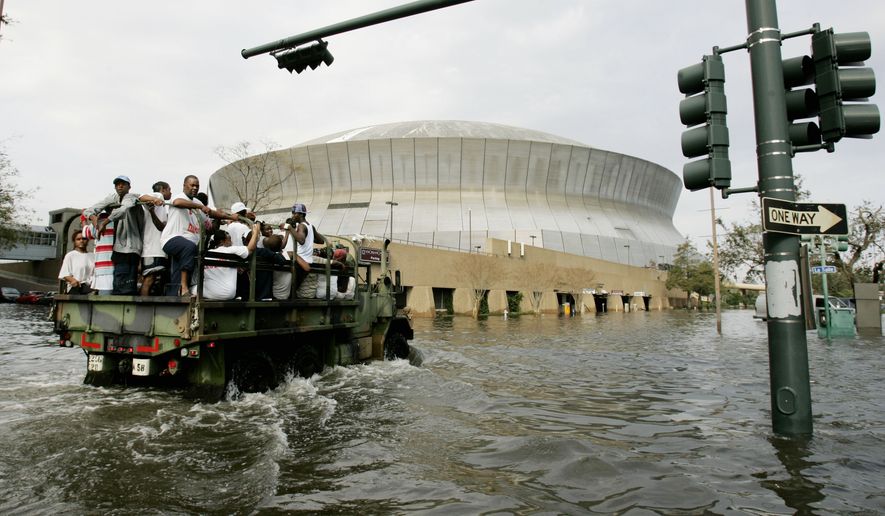OPINION:
In the days and weeks after Hurricane Katrina blew a path of destruction through New Orleans in 2005, Americans took notice of the bungling of the Federal Emergency Management Agency (FEMA) and its dysfunctional performance. Many began to question why the agency exists.
A new report by the Cato Institute argues persuasively that the New Orleanians who suffered the wind and rain would have been better off without FEMA. The agency’s failure cost taxpayers billions of dollars, suffocating state and local governments and private aid organizations, which are far better suited to help disaster victims, and the failure put everyone at unnecessary risk. It’s a familiar observation of reporters covering the aftermath of a storm that “the bureaucrats arrive late with press releases, the Salvation Army first with hot coffee, sandwiches and blankets.”
FEMA’s defenders insist that without a central agency to take control in emergency situations, local authorities would be in over their heads. They say that without a clear chain of federal command relief would be chaotic and uncoordinated.
But anybody who’s been paying attention knows this is not true. Historically, local communities have handled emergencies, often with the guidance of state leaders. Different sections of the country face different natural disasters. Who better to prepare for and respond to these catastrophes than people who actually live in and know the region?
Chris Edwards, who wrote the Cato report, argues that “Federalism is supposed to undergird America’s system of handling […] natural disasters. State, local and private organizations should play the dominant role. Looking at American history, many disasters have generated large outpourings of aid by individuals, businesses and charitable groups.”
However, in the latter half of the 20th century, the federal government began to get much more involved in emergency response. With the creation of FEMA in 1979, the federal government signed up for the complicated job of preparing an entire nation for every disaster that might hit it anywhere. Ambitious, to say the least.
Like everything the federal government touches, FEMA has grown bigger and a lot more expensive. The agency spent an average of $700 million annually in the 1980s, it now spends more than $13 billion a year. In addition to disaster relief, FEMA contributes to the states’ preparedness funds, and runs a subsidized flood insurance program.
If an era of 12-figure bailouts and trillion-dollar deficits has so jaded everyone that it’s too much trouble to quibble over a mere $13 billion, the unintended consequences of centralized government disaster control should make everyone to think again.
FEMA has endangered disaster-stricken communities by placing them under the control of a lumbering, distant bureaucracy. The CATO assessment criticizes FEMA is “too slow, risk averse, subservient to politics, and it does not have the local knowledge needed to effectively handle many disasters.” When disaster does strike, confusing regulations scare off emergency workers from other regions, since you can get called into court if you don’t jump through the right hoops.
Additionally, FEMA’s flood insurance program cheats taxpayers elsewhere to give wealthy beachfront condo owners a sweet deal on their insurance premiums. Army Corps of Engineer programs to make floodplains inhabitable draw more people to riskiest parts of the country, increasing the cost of disaster relief.
Even in the best of times, top-down central planning doesn’t work well. The government doesn’t have the means to allocate resources fairly and efficiently. When disaster strikes, a czar in Washington is the least efficient official to guarantee delivery of the things people need. FEMA has become the disaster.
FEMA is much less equipped to help people than state and local agencies, as well as the churches that are a particularly effective means of relieving pain and hunger in the wake of the storm. But for these religious relief agencies, staffed with volunteers, the many who were left devastated in New Orleans would have gone unclothed and hungry.




Please read our comment policy before commenting.